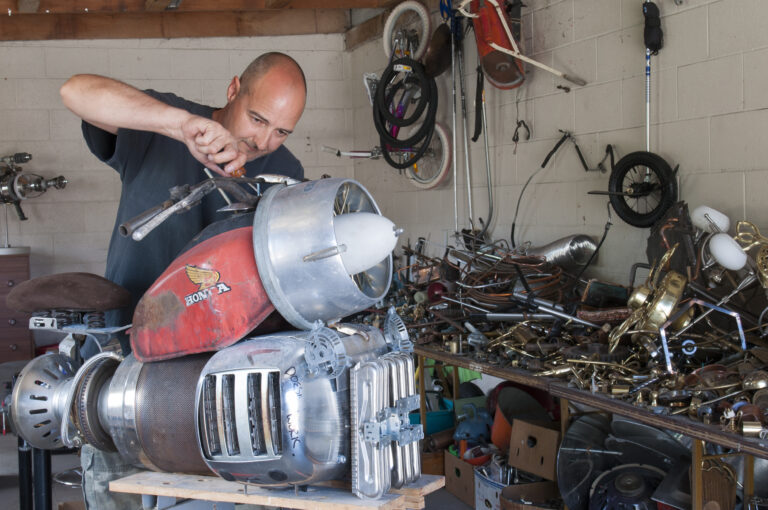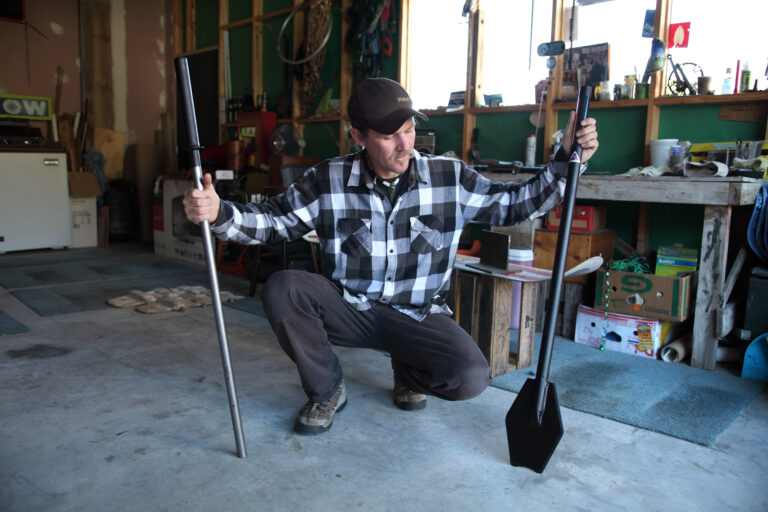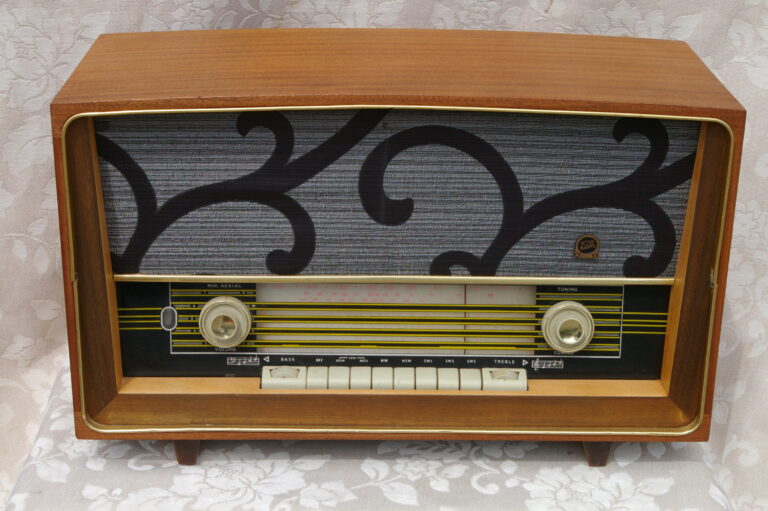Puzzling out Richard Pearse’s engine
by Roger Lacey
Ivan Mudrovich’s interpretation of Richard Pearse’s aircraft with…
…the recreated two-cylinder engine.
Richard Pearse
Flight
At the end of 2013, Ivan Mudrovich’s team had the re-assembled aircraft ready for engine testing, but nervous caution was understandably present. As filmmaker Wayne Johnson wrote in his blog:
“The sound of that Pearse wing destroying itself in a matter of seconds as it tore itself apart in a chain reaction fashion on the 14th September in 2012 at Whenuapai Air Base is a sound that I don’t think any of us will forget for a long while.” Retired Air New Zealand captain, Neville Hay as test pilot was not apprehensive but noted, “You have to think about everything you do. You can’t rely on memory of flying the plane.”
The riddle of Richard Pearse has been a source of fascination amongst anyone with an interest in New Zealand’s shed culture. How could a man on a remote South Canterbury farm manage to build a machine that could get airborne at around the same time that Orville and Wilbur Wright made their historic flight?
Consider this: Richard Pearse’s design has more in common with modern aircraft than the machine flown at Kittyhawk in 1903. Ailerons, a direct-drive propeller at the front and a tricycle undercarriage are all seen today on light aircraft.
So the questions remain:
• Is Pearse’s design actually capable of controlled flight? and
• Did Pearse fly but just didn’t consider his flights to be practical enough to be worthy of being called controlled flight?
Trying to get a better understanding of Pearse’s extraordinary work and put his design to the test has been a nine-year journey for retired automotive engineer Ivan Mudrovich who has built an aircraft based on the recovered engine remnants and Pearse’s 1906 patent applications.
New wing, with more tube and less bamboo.
Growing up
If anyone could build an accurate working model of the Pearse aero engine, it would be Ivan. He grew up in New Plymouth and discovered his passion for engines at an early age. At age 14, he pulled apart his father’s Morris Eight and took parts to Ibbotson Brothers, the local car dealer, for reconditioning. The owner was impressed and offered him an apprenticeship starting on his 15th birthday.
“I was hopeless at school and couldn’t wait to get out of there” says Ivan.
Ibbotson Brothers was the largest dealership in Taranaki with showroom, engineering workshop, panel shop, upholstery shop and paint shop so Ivan was exposed to many trades besides his chosen one. Ivan also met the office girl, Janet who was to become his wife.
A few years after moving north to Auckland in 1958, Ivan bought some equipment and started an engine reconditioning business from his garage at home before opening his own company that he ran until his retirement.
While he built up a strong reputation for building high-performance speedway engines, he never got into racing.
“I may be mad but I’m not that mad” he says.
When Ivan sold his business in 2001, the pick of his equipment came home with him. Packed into his small garage are a lathe, mill, several cylinder boring machines, a piston grinder, a piston casting machine and a big-end borer converted to boring gudgeon pin holes. A rebuilt BSA motorbike engine sits on a bench waiting for Ivan to finish with his Pearse project.
In 2004, Ivan, not long into his retirement, had just got out of hospital from heart surgery when he was approached by a committee of Pearse enthusiasts to look at building a working model of Pearse’s two-cylinder engine. After a couple of meetings, Ivan quickly realised that his temperament was not suited to working with committees and if he was going to do it, it would be on his own terms and so he started his own project.
Ivan has gone a long way in unlocking the secrets of Richard Pearse’s designs and has built a double-acting, two-cylinder engine using the description from Pearse’s 1906 patent application and measurements from salvaged engine pieces.
Strut arrangement with bamboo.
Not easy
It hasn’t been easy. Almost all of Pearse’s drawings have been lost, the only items that remain are his patent applications, some notes, newspaper articles and some mechanical relics.
Richard Pearse historian and biographer Gordon Ogilvie reported that in 1971 he excavated from a Lower Waitohi farm dump the irrigation-pipe cylinders from Richard Pearse’s’ rudimentary 2-cylinder, horizontally opposed, double-acting “oil engine”.
In an address at the South Canterbury Museum in Timaru where the Richard Pearse Archives are housed, reported in The Press newspaper, he said the excavation was with the help of Maurice Cameron who had searched the farm 13 years earlier on behalf of George Bolt and recovered relics of one of Pearse’s four-cylinder engines with propeller and crankshaft.
As Pearse built several engines, including at least one for a motorbike, the pieces that were recovered from the dump were a bit of a mystery box. Discovering whether the parts were from working engines or discarded experiments was like attempting to complete a jigsaw with half the pieces missing, parts from other jigsaws thrown in and with the possibility that some of the original jigsaw had been modified and used for yet another jigsaw. However, Ivan has painstakingly gone through and tried to make sense of it all.
Remaining as true as possible to what Pearse could have built has proved frustrating at times when Ivan, with his knowledge and a century of engine development later, could see better ways of doing things.
“Pearse could do what he liked. I’m restricted; I can only do what he could have done.”
It’s a blend of forensics and reverse engineering in trying to work out Pearse’s thoughts. It’s a process based on the technology of the times, reviewing what is known and then researching the published mechanical journals and books that Pearse would have read.
“I had to forget everything that’s been learned since,” says Ivan about constructing the engine. As part of his research, he’s visited the South Canterbury Museum in Timaru and the Railway Museum at Pleasant Point, both which hold original Pearse engine cylinders. He took with him a jig he had built so he could take linear and angular measurements of each cylinder barrel and head.
Speculation extra rivets were added later for strength.
The four-inch hydraulic pipe used for safety, outside view…
…and inside.
Cylinder
The cylinder construction is an example of the detail that Ivan has gone into in his project. Originally the cylinder was made from four-inch (100 mm) diameter, cast-iron drainage pipe with the head, made from 1/8” (3.2 mm) plate, riveted to it by threading in screws and peening the heads over.
The source of the screws was a puzzle until someone recognised them as piano tuning screws of a style used in the 1800s.
The spacing of the rivets around the cylinder lead to some speculation as it appeared that every alternate hole was evenly spaced but the ones in-between seemed drilled at random. That led Ivan to surmise that the extra holes were probably added later to help strengthen the join.
A solid bar connects the two pistons.
Spark plugs
It is known that Pearse made his own spark plugs with the help of automotive pioneer Cecil Wood. But the cylinder heads Ivan inspected had been bored out to an M18 thread to fit the Bosch plugs which came on the market in 1902. The thread only just fits within the doubling plate that had been riveted to the head.
Ivan surmised that Pearse’s home-made plugs were probably a smaller diameter and were replaced when the commercial plugs became available. For reliability, Ivan’s engine runs modern plugs but he has set of reproduction Bosch plugs for display purposes.
Bracket
The reason for a bracket on one of the salvaged cylinder heads had Ivan mystified until he made a mock-up of the two cylinders from MDF and PVC pipe. He made both outer cylinder heads identical before realising that they should have been a mirror image of each other. The inlet port on one cylinder head ended up on the opposite side to the inlet manifold so Ivan concluded that if Pearse had made the same mistake a bracket would have been required to support the longer inlet pipe.
In building his engine, Ivan uses the guiding principle: “What would Pearse have done?” So rather than making the heads identical and use a manifold bracket, Ivan made his cylinder heads left and right-handed.
For safety reasons Ivan has used four-inch hydraulic pipe. This has less chance of cracking than the original cast iron pipe that was never designed to handle compression.
A solid bar connects the two pistons and a crosshead, single con-rod and crank drive the propeller shaft in an arrangement known as a Scotch yoke. Because both pistons move as one, they don’t balance each other as they would in a conventional, horizontally opposed engine, meaning there is a lot of vibration when it runs.
The inlet and exhaust valves are operated by push rods driven with the exhaust venting straight out the top of the cylinder heads with no muffler. Ignition is by trembler coils operated by a rotary switch using the points from a Model T Ford. Although the Model T wasn’t launched until 1908, this type of ignition was known before then. The coils let off a series of sparks on each ignition stroke so timing is reliable rather than precise.
Power for the ignition is by battery only, as the engine has no generator or magneto. The battery holds enough power to provide ignition for several hours running so on-board charging is not required.
Valve actuating gear
Carburettors
The carburettors have been modified from the Pearse’s tobacco-tin design to cope with modern petrol rather than the volatile benzene fuel used in the early 1900s.
“I spent months trying to get a throttle that would work because the chaps who want to fly my plane wanted to be able to throttle the engine,” explains Ivan. “In the end I threw it all away and went for a simple, drip-feed carburettor because modern fuel doesn’t vaporise like benzene.”
To control engine speed, the pilot has a button that will cut the ignition when pressed and to stop the engine, the fuel supply is turned off.
Starting
There is no starter motor and Ivan doesn’t risk his or his assistant’s knuckles by swinging the prop. Instead the ignition is turned off and the prop rotated to draw fuel into the engine, the engine is put onto a compression stroke and the ignition turned on to fire the first cylinder. This gives enough kick for the low compression engine to roar into life.
Getting the engine running to Ivan’s satisfaction took a while. “I could hear the sound the engine should make in my head” explains Ivan.
The engine now performs to expectations and has been run for up to eight minutes. “She’s getting a bit hot by then,” he says in his typical laconic style.
Whole plane
While he was building the engine, Ivan became fascinated by some of Pearse’s observations about his plane that could only have been made by someone who had flown it. “He (Pearse) states that small amounts of aileron movement create lift while large amounts would create drag,” Ivan says. “The only way to discover that would have been by experience.”
To satisfy his curiosity, Ivan decided to build the whole plane to test Pearse’s theory.
Only a few small remnants have been found of the Pearse airframe and wing so sketches and drawings are all Ivan has had to work with, but every detail has been thought through in an attempt to be as true as possible to what Pearse could have built.
The triangular frame is made from 1” (25 mm) tube and brazed together. The steerable front wheel is made from reinforced bicycle forks.
At around 800 square feet, the wing seems enormous compared to the other Pearse aircraft that have been built but Ivan has evidence to show that over time, Pearse modified and extended the wing to this size.
Building the rear rudder.
Construction
The main spars of the wing are locally harvested 2 ½” (62 mm) diameter bamboo and the ribs made from 5/8″ (28 mm) diameter steel tube. Ivan has made dozens of beautifully fabricated and machined brackets to clamp and support the framework at each intersection. A bird’s nest of wires braces the structure that is covered with acres of calico.
“Early designers reckoned if you released a bird in the middle of the wing and it could escape, then you needed more wire,” he quips.
Ivan has made dozens of threaded adjusters to help tension the wires. Using a jig he designed, he bends a threaded rod into a hook. The hook then screws into a motorbike spoke nipple that is held captive in a swaged-over tube. The other end of the tube is flattened and drilled for the wire terminal.
To adjust the hinged ailerons, wires lead from the control stick through guide tubes to the wing tips. The articulated elevator is set below the wing and a stick is used to adjust the angle.
Propeller
The propeller is four-bladed, unlike the one displayed on the Pearse memorial near Timaru.
“I started with a two-blade design but it didn’t have enough thrust to govern the engine speed,” Ivan says. “Then I was looking at pictures of the prop that had been retrieved from Pearse’s dump and realised that the bracing pieces fitted to it made no sense unless they were there to drive another two blades.”
Ivan describes working on the aeroplane as a process of modification.
“First you make something, then you modify it, then you modify the modification until what you have looks nothing like what you made in the first place.”
Making his job trickier is the fact that the few original remnants he is working from may have gone through the same process more than 100 years ago.· Much of his time Ivan reckons is spent “nutting things out”. He tries to work on something every day to keep momentum.
Ivan insists that his work is not a replica of Pearse’s aircraft as there are no drawings or images to work from. The design fills in a lot of gaps where there was no information by making educated guesses as to what Pearse could have made. Ivan has created an interpretation of Richard Pearse’s flying machine to Richard Pearse’s specifications and he stresses that he considers the two-cylinder engine to be a copy based on artefacts.
Testing
He is philosophical about the project and the possibility of failure.
“I don’t care if it doesn’t fly, we’ll have given it our best shot.”
The plane has had some pre-flight testing which resulted in the breaking of the wing when it was attached to a trailer and towed down the runway. Ivan is philosophical about the setback.
“The broken wing did us a favour,” he says. “I wasn’t happy with it and was already was thinking about how I’d do it differently.”
The plane is currently in pieces waiting for transport to Whenuapai where it will be reassembled and undergo extensive testing. At this time, a date has not been confirmed but it is hoped to make attempts at flight before the end of the (2014) year.
Ivan modestly protests that his project is not about him but about Richard Pearse. While his plane will never prove that Pearse flew before the Wright brothers, if it does manage to take to the sky, it will demonstrate that a Kiwi invel’!tor had developed a design that was at the very least, equal to anything in the world at the time and will help cement Pearse’s name in aviation history books as one of the true pioneers of powered flight
Engine
Horizontally opposed double-acting twin-cylinder
Capacity: 4.8 litres
Bore x stroke: 4” x 6” (100 mm x 150 mm)
Compression ratio: 4:1
Ignition: Trembler coil with Model T Ford rotary switch
Fuel: 91 octane
RPM: 540
Horsepower: Hopefully sufficient
* Notes:
Cameraman Wayne Johnson who kindly supplied many photos for this article has made a documentary
“Will it Fly?” following Ivan and his building of the Pearse aeroplane.
Here is a link to the trailer for the completed film https://www.youtube.com/watch?v=FCrtEcEUCkc
Sadly the whole journey of this project has slowed with Ivan’s passing in June 2018.
Here is a link to a New Zealand Herald article reporting the end of the project due to Ivan’s ill health.
https://www.nzherald.co.nz/nz/news/article.cfm?c_id=1&objectid=11935266
Cylinder head



